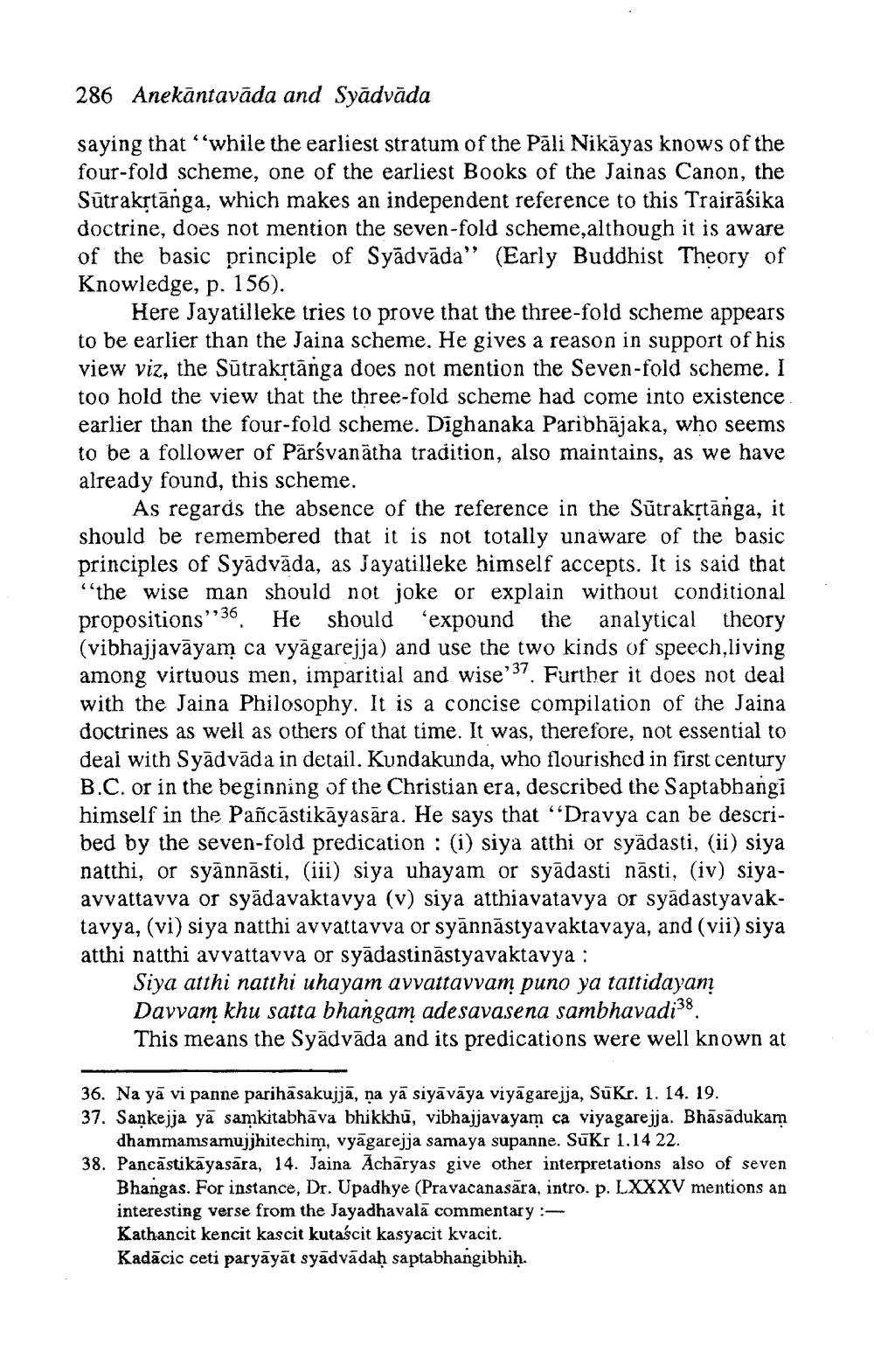________________
286 Anekāntavāda and Syádvāda
saying that while the earliest stratum of the Pāli Nikāyas knows of the four-fold scheme, one of the earliest Books of the Jainas Canon, the Sūtrakstānga, which makes an independent reference to this Trairāśika doctrine, does not mention the seven-fold scheme,although it is aware of the basic principle of Syâdvāda" (Early Buddhist Theory of Knowledge, p. 156).
Here Jayatilleke tries to prove that the three-fold scheme appears to be earlier than the Jaina scheme. He gives a reason in support of his view viz, the Sūtrakstānga does not mention the Seven-fold scheme. I too hold the view that the three-fold scheme had come into existence earlier than the four-fold scheme. Dighanaka Paribhäjaka, who seems to be a follower of Pārsvanātha tradition, also maintains, as we have already found, this scheme.
As regards the absence of the reference in the Sūtrakstānga, it should be remembered that it is not totally unaware of the basic principles of Syādvāda, as Jayatilleke himself accepts. It is said that "the wise man should not joke or explain without conditional propositions":36. He should 'expound the analytical theory (vibhajjavāyam ca vyāgarejja) and use the two kinds of speech,living among virtuous men, imparitial and wise'37. Further it does not deal with the Jaina Philosophy. It is a concise compilation of the Jaina doctrines as well as others of that time. It was, therefore, not essential to deal with Syadvāda in detail. Kundakunda, who flourished in first century B.C. or in the beginning of the Christian era, described the Saptabhangi himself in the Pañcāstikāyasära. He says that "Dravya can be described by the seven-fold predication : (i) siya atthi or syādasti, (ii) siya natthi, or syānnāsti, (iii) siya uhayam or syādasti nāsti, (iv) siyaavvattavva or syādavaktavya (v) siya atthiavatavya or syādastyavaktavya, (vi) siya natthi avvattavva or syānnāstyavaktavaya, and (vii) siya atthi natthi avvattavva or syādastināstyavaktavya :
Siya atthi natthi uhayam avvattavvam puno ya tattidayan Davvam khu satta bhangam adesavasena sambhavadi38. This means the Syädvāda and its predications were well known at
36. Na yā vi panne parihāsakujjā, ņa yā siyāvāya viyāgarejja, SūKr. 1. 14. 19. 37. Sankejja yā samkitabhāva bhikkhū, vibhajjavayam ca viyagarejja. Bhāsadukam
dhammamsamujjhitechim, vyāgarejja samaya supanne. SūKr 1.14 22. 38. Pancāstikāyasara, 14. Jaina Acharyas give other interpretations also of seven
Bhangas. For instance, Dr. Upadhye (Pravacanasāra, intro. p. LXXXV mentions an interesting verse from the Jayadhavală commentary :Kathancit kencit kascit kutaścit kasyacit kvacit. Kadācic ceti paryāyāt syadvādah saptabhangibhiḥ.




